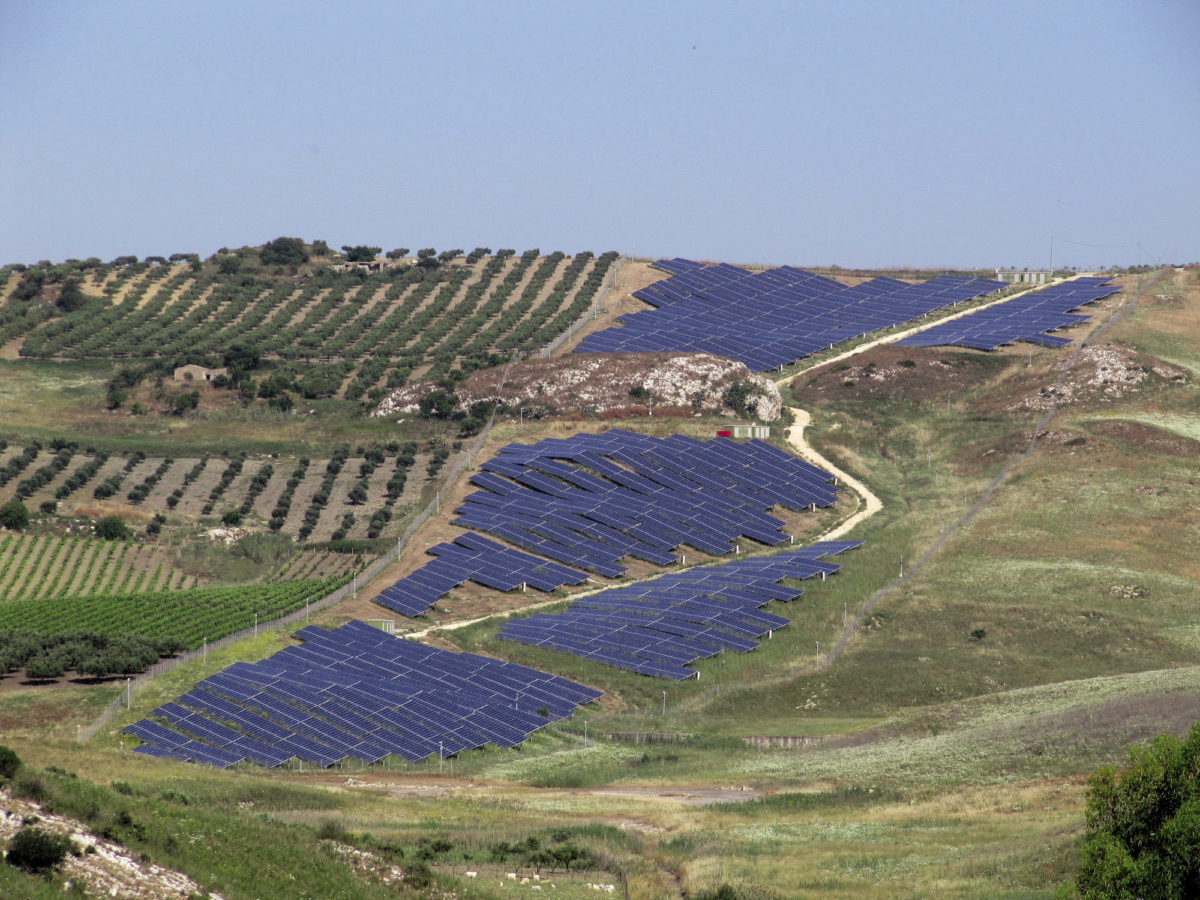Gestore dei Servizi Energetici, the Italian energy agency, allocated 313.9 MW of renewables capacity in the country's third clean-energy auction, for projects with capacities above 1 MW.
The procurement exercise, which drew bids for 329.9 MW of capacity, was undersubscribed. The government initially hoped to assign 936.1 MW of new projects.
Wind power dominated once again, with 281.4 MW allocated across 15 sites. The authorities awarded 95.5 MW of solar capacity across four locations. They include a 4.6 MW solar array in Rome, which was the lowest power price in the auction, at €64.90/MWh, in an auction with a €70/MWh price ceiling.
The big surprise is the inclusion of an 82.3 MW solar power plant to be built in the municipality of Uta, near Cagliari, Sardinia, at an offered price of €68.49/MWh. The remaining two winning PV projects were a 4.5 MW facility in Gualdo Tadino, Umbria, and a 4.1 MW installation in Trecate, Piedmont. The projects drew offer prices of €67.55/MWh and €68.51/MWh, respectively.
For wind power, the lowest price was €66.85/MWh for a 34.6 MW project in the southern province of Benevento. At the other end of the scale, a 8.9 MW wind farm in the southern province of Palermo drew a bid of €68.53/MWh.
In the second renewables auction, only 19.3 MW of PV capacity was allocated across four projects. The lowest price of €56/MWh was offered for a solar project.
In the first procurement round, only one 5 MW solar plant was awarded, along with 495 MW of wind capacity. The single PV project will sell electricity for €60/MWh.
The tenders, which exclude projects on agricultural land, are part of an auction scheme launched by the government in June 2019. All of the first three rounds of the scheme were largely undersubscribed.
According to ANIE Rinnovabili, the Italian renewable energy association, the main problem with clean energy auctions is the limited number of submitted projects, which makes them uncompetitive. “This is also reflected by the fact that all submitted prices were very close to the ceiling price,” Alberto Pinori, the president of the association, told pv magazine.
According to Pinori, the difficulty of securing approvals for large-scale solar arrays and other renewable energy projects, as well as securing land, makes it very difficult for developers to drive down the costs of the planned facilities. The association claims that with newly introduced rules, the situation might improve. However, their impact might only be seen in 2021, when the current auction scheme is set to expire.
The Italian government hopes to allocate approximately 4.8 GW of generating capacity in the auction scheme, which includes smaller procurement rounds for projects under 1 MW. The first two procurement rounds were each expected to allocate roughly 500 MW of capacity. In rounds three to five, each tender must assign 700 MW. For the final two rounds, the contracted capacity will reach 800 MW.
Italy, which has around 20.9 GW of solar capacity, plans to install around 50 GW by 2030. This means that more than 3 GW of solar PV per year will be needed to reach the target.
This content is protected by copyright and may not be reused. If you want to cooperate with us and would like to reuse some of our content, please contact: editors@pv-magazine.com.




By submitting this form you agree to pv magazine using your data for the purposes of publishing your comment.
Your personal data will only be disclosed or otherwise transmitted to third parties for the purposes of spam filtering or if this is necessary for technical maintenance of the website. Any other transfer to third parties will not take place unless this is justified on the basis of applicable data protection regulations or if pv magazine is legally obliged to do so.
You may revoke this consent at any time with effect for the future, in which case your personal data will be deleted immediately. Otherwise, your data will be deleted if pv magazine has processed your request or the purpose of data storage is fulfilled.
Further information on data privacy can be found in our Data Protection Policy.